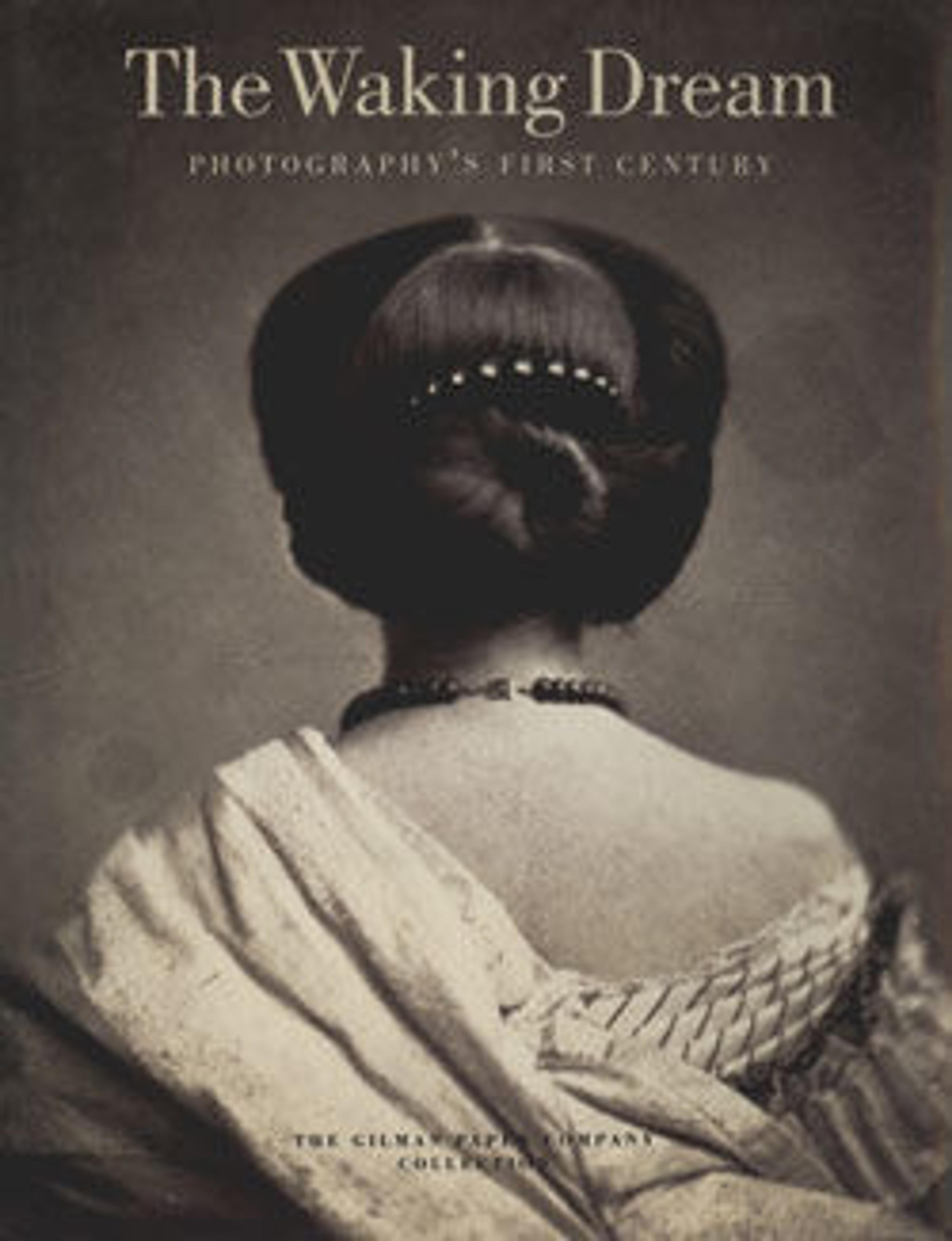Jacqueline Goddard
Man Ray had been one of the instigators of Dada in New York in the 1910s. Soon after his arrival in Paris in 1921, the randomness and irrationality of Dada began to be replaced by the fantasy and incongruity of Surrealism. Neither movement had been motivated by the production of visual artifacts; rather, both sought to give expression to the unconscious. Through his innovative use of the photographic medium, Man Ray carved a niche for himself in the Surrealist circle and contributed a distinct visual character to a movement that was firmly grounded in literary and psychoanalytic theory.
In this image, the photographer defamiliarized his subject-one of his favorite models, Jacqueline Goddard-by means of several reversals of the norm: black has become white, shadows glow, and gravity is defied. While explained easily enough in terms of technique-this is a negative print rotated ninety degrees toward the bottom edge of its original exhibition mount-the image remains nonetheless disorienting and disquieting. What kind of creature is this woman, who at one moment appears triumphant in her state of suspension and at the next seems to slide silently into a dark underworld-an imaginary water nymph, or a very real femme fatale? Is it the yearning for a higher spiritual realm that buoys her up, or is it the carnal world of sexuality into which she slides?
In this image, the photographer defamiliarized his subject-one of his favorite models, Jacqueline Goddard-by means of several reversals of the norm: black has become white, shadows glow, and gravity is defied. While explained easily enough in terms of technique-this is a negative print rotated ninety degrees toward the bottom edge of its original exhibition mount-the image remains nonetheless disorienting and disquieting. What kind of creature is this woman, who at one moment appears triumphant in her state of suspension and at the next seems to slide silently into a dark underworld-an imaginary water nymph, or a very real femme fatale? Is it the yearning for a higher spiritual realm that buoys her up, or is it the carnal world of sexuality into which she slides?
Artwork Details
- Title: Jacqueline Goddard
- Artist: Man Ray (American, Philadelphia, Pennsylvania 1890–1976 Paris)
- Date: 1930
- Medium: Gelatin silver print
- Dimensions: Image: 29.2 x 22.5cm (11 1/2 x 8 7/8in.)
Mount: 57.2 x 42.8 cm (22 1/2 x 16 7/8 in.) - Classification: Photographs
- Credit Line: Gilman Collection, Purchase, Ann Tenenbaum and Thomas H. Lee Gift, 2005
- Object Number: 2005.100.141
- Rights and Reproduction: © 2025 Artists Rights Society (ARS), New York
- Curatorial Department: Photographs
More Artwork
Research Resources
The Met provides unparalleled resources for research and welcomes an international community of students and scholars. The Met's Open Access API is where creators and researchers can connect to the The Met collection. Open Access data and public domain images are available for unrestricted commercial and noncommercial use without permission or fee.
To request images under copyright and other restrictions, please use this Image Request form.
Feedback
We continue to research and examine historical and cultural context for objects in The Met collection. If you have comments or questions about this object record, please complete and submit this form. The Museum looks forward to receiving your comments.
